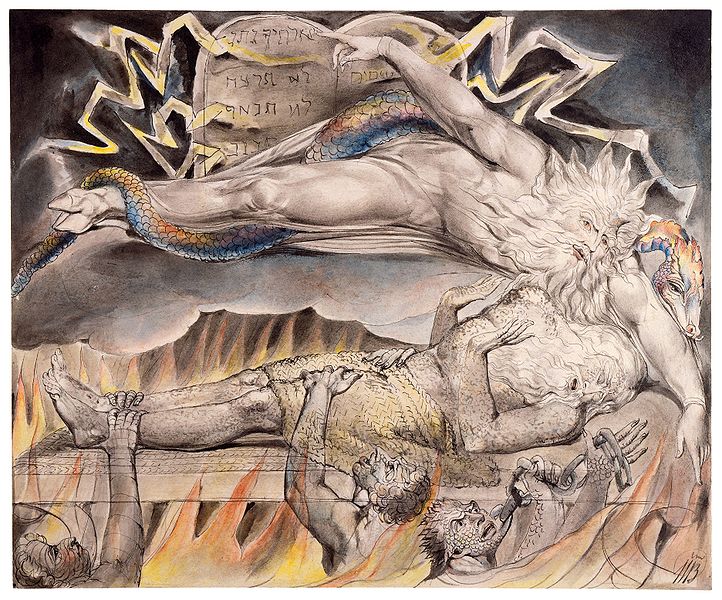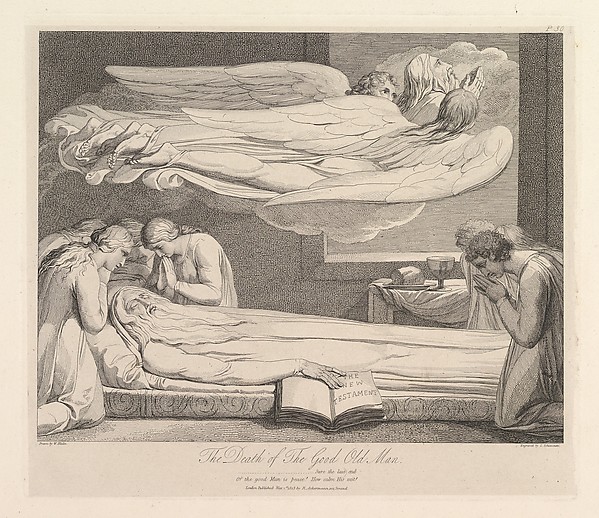"one thing may be asserted of this work, which can be said of few others that have passed the hands of an engraver, which is, that Mr. Blake has condescended to take upon him the laborious office of making them, I may say fac-similes of my originals: a compliment, from a man of his extraordinary genius and abilities, the highest, I believe, I shall ever receive: - and I am indebted to his generous partiality for the instruction which encouraged me to execute a great part of the plates myself; enabling me thereby to reduce considerably the price of the book."
 |
British Museum
Illustration to Thoughts on Outline
Cupid and Psyche
|
Letters, (E 699)
"G Cumberland Esqr, Bishopsgate
near Egham, Surrey
Lambeth, 6 Decembr 1795
Dear Sir
I congratulate you not on any atchievement. because I
know. that the Genius that produces. these Designs can execute
them in any manner. notwithstanding the pretended Philosophy
which teaches that Execution is the power of One & Invention of
Another--Locke says it i[s the] same faculty that
Invents Judges, & I say he who can Invent can Execute.
As to laying on the Wax it is as follows
Take a cake of Virgins wax <([if it can be found] [if
such be]< I dont know what animal produces it>)> & stroke it
regularly over the surface of a warm Plate. (the Plate must be
warm enough to melt the Wax as it passes over) then immediately
draw a feather over it & you will get all even surface which when
cold will recieve any impression minutely
Note The danger is in not covering the Plate All over
Now You will I hope shew all the family of Antique Borers,
that Peace & Plenty & Domestic Happiness is the Source of Sublime
Art, & prove to the Abstract Philosophers--that Enjoyment & not
Abstinence is the food of Intellect.
Yours sincerely
WILL BLAKE
Health to Mr Cumberland & Family
The pressure necessary to roll off the lines is the same
as when you print, or not quite so great. I have not been able
to send a proof of the bath tho I have done the corrections. my
paper not being in order."
That Blake's final engraving was made at the request of George Cumberland
in 1827 is testimony to closeness they enjoyed. Other posts on Cumberland: Last Supper Reading Blake This Foolish Body










